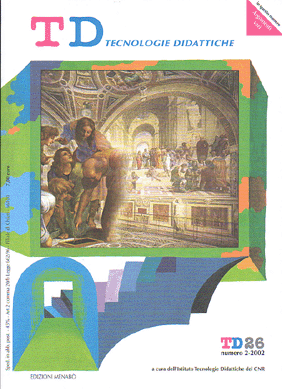Online training of teachers of physics: an example
Main Article Content
Abstract
Article Details
Authors who publish with this journal agree to the following terms:
- Authors retain copyright and grant the journal right of first publication with the work simultaneously licensed under a Creative Commons CC BY 4.0 Attribution 4.0 International License.
- Authors are able to enter into separate, additional contractual arrangements for the non-exclusive distribution of the journal's published version of the work (e.g., post it to an institutional repository or publish it in a book), with an acknowledgement of its initial publication in this journal.
- Authors are permitted and encouraged to post their work online (e.g., in institutional repositories or on their website) prior to and during the submission process, as it can lead to productive exchanges, as well as earlier and greater citation of published work (See The Effect of Open Access)
References
Borghi L, A. De Ambrosis A., C. Invernizzi, E. Lunati, P. Mascheretti (2000), Analisi fenomenografica di una sperimentazione in didattica della fisica sui fenomeni di attrito, TD Tecnologie Didattiche, vol. 1, pp. 21-29.
Caldas H. (1994), Le frottement solid sec. Le frottement de glissement et de non glissement. Etude des difficultés des etudiants et analyse de manuels, Thèse, Paris 7
Caldas H. and Saltiel E. (1995), Le frottement cinétique: analyse des raisonnements des étudiants, Didaskalia, pp. 55-71
McClelland J.A.G. (1991), Friction and related phenomena, Phys. Educ., 26, pp. 232-237
Meningaux, J. (1994), Students’ reasoning in solid mechanics, Phys. Educ., 29, pp. 242-246.
R.K Thornton. and D.R Salazar, A., Sanchez-Lavega A., Arrandiaga M.A. (1990), Is the frictional force always opposite to the motion?, Phys. Educ.,25, pp. 82-85.
Sperandeo-Mineo R.M. (2001), I.MO.PHY. (Introduction to MOdelling in PHYsics-education): a netcourse supporting teachers in implementing tools and teaching strategies, in Physics Teacher Education Beyond 2000 (Phyteb2000), R.Pinto, S. Surinach Eds., Girep book - Selected contributions of the Phyteb2000 International Conference, Elsevier, pp.615.
Thornton R.K and Sokoloff D.R. (1990), Learning motion concepts using real-time, microcomputer- based laboratory tools, Am. J. Phys., 58, pp. 858-867
Viennot L. (1989), Bilan des forces et loi des actions réciproques. Analyse des difficultés des élèves et les enjeux didactiques, BUP, 716 ,pp 951- 969

